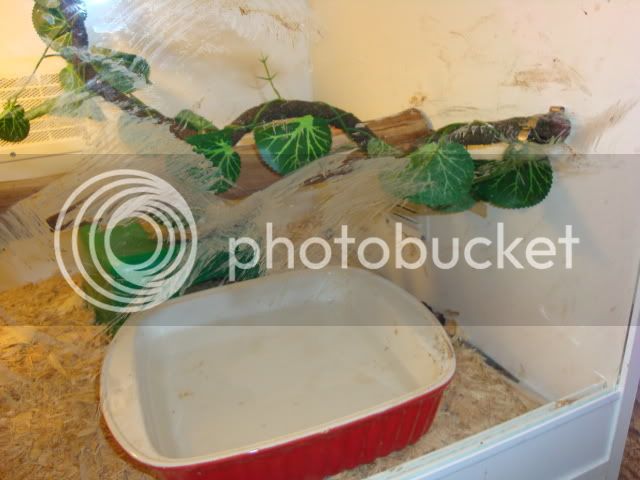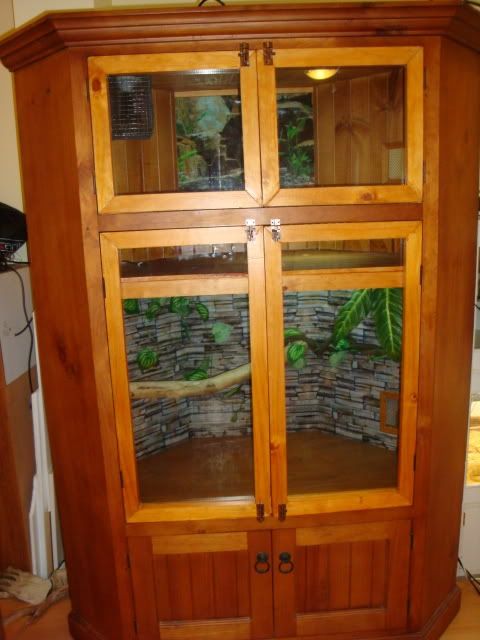Hello again!

I'm going to start with C), because I'm a rebel like that - No! I wouldn't say it's too ambitious, just as long as you're really committed to the project and have access to some of the required tools. Thus far, in my cabinet conversion, I've only really needed to use a jigsaw (to cut out holes for the air vents) and an electric drill (to install heating etc). You'll also need to purchase the glass & running tracks (assuming you want sliding doors) which can be a little pricey depending where you get it from, I got mine for about $80 (which isn't too bad, but I've seen cheaper). There are a lot of little things you need to think about, but if you're determined you'll very likely end up with a nice enclosure.
B) The enclosure Banjo's in currently is about 45cm high, I personally wouldn't go any lower than that. As far as higher, if I happened upon an enclosure with good dimensions, and it had some extra height, I actually think Banjo would like that; seeing as how he's a little weirdo and loves to climb. On the other hand, if you do find a great TV cabinet with excess height, to use any space that may otherwise be wasted you can always install a second floor and a ramp up to it (with cross bars on the ramp for a bluey's little feet to grab onto, assuming you get a bluey).
A) - As far as I know, for a beardy you're going to need UV lighting installed. There's lots of debate on whether or not blueys require UV lighting. Personally, I don't have UV for Banjo, but he gets plenty of outside time in the real UV, so it's not really a concern.
- Obviously heating (of which there are many methods), some people like to install heat cords sandwiched in between 2 tiles as their main heating (+ some kind of lighting for diurnal lizards), for their reptiles to lay on and get belly heat. Other people install only heat from above (which can be a globe that produces heat & light, or a ceramic heat emitter (no light), or even a heat panel etc), but provide a flat stone or tile beneath the heat source which warms up so that the reptile receives belly heat as well as heat from above at the same time (this is what I've got set up for Banjo, and he loves basking on his tile). And of course, some people use a combination of heating from below and above.
- Also as mentioned previously, you will need to install air vents, to keep a bit of air flow in the enclosure. I just popped down to the hardware store and grabbed some of those wall air vents you see in some houses, really simple to install.
- Most people (though not all) install thermostats to control any heating equipment in the enclosure, as well as thermometers and hygrometers (to check temperature & humidity in the enclosure). Some people choose to use low powered heating and forgo the thermostat, which is a little controversial, but it seems to work for them if done right.
- Then there's the background, if you decide you want to tackle that.. You have the option of either building the background right into the enclosure, or building it outside of the enclosure and installing it once it's finished. I'm in the process of trying to make a background at the moment, and with all the crevices etc, getting the render in there has been a nightmare! haha, but fingers crossed it should look decent when it's finished

Anyway, I'm being badgered to get out of bed and go out, so I've got to hop off. Sorry if I've forgotten anything. I'm sure other people will chime in for you

x
EDIT - Pythonmum hit the nail on the head by suggesting that you check out the new Code of Practice... I completely forgot to mention that, but it is very important that you check it out. You don't want to put all this work into a conversion project only to find that the enclosure doesn't fit regulation. +1 Pythonmum.







